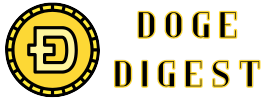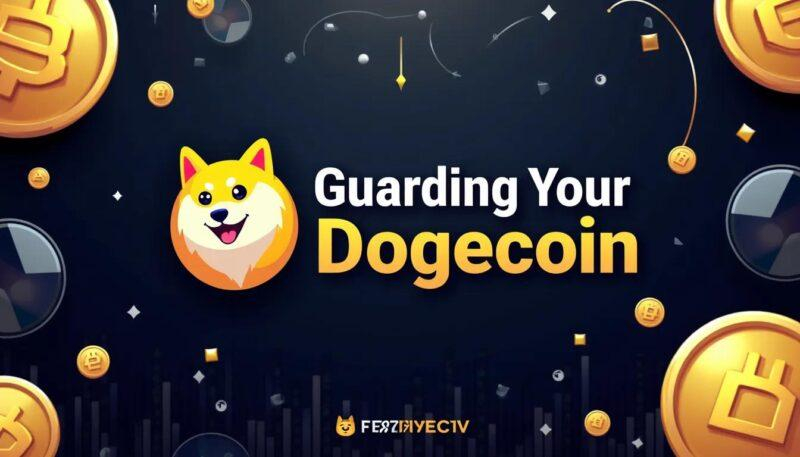In the fast-evolving world of cryptocurrencies, Dogecoin has carved out its unique place-part internet meme, part serious digital asset. As its popularity continues to soar, so does the responsibility of safeguarding your coins from the myriad risks lurking in the digital landscape. Whether you’re a seasoned trader or a casual holder, understanding how to protect your Dogecoin is essential in ensuring your investment remains secure. This article explores practical, reliable strategies to guard your Dogecoin, empowering you to navigate the crypto world with confidence and peace of mind.
Understanding the Basics of Dogecoin Security
At its core, securing Dogecoin revolves around protecting your private keys-the cryptographic keys that grant access to your digital assets. Without control over these keys, your coins can be irretrievably lost or stolen. It’s crucial to store them in a secure environment, preferably offline in a hardware wallet or a cold storage solution. This dramatically reduces exposure to online threats such as hacking, phishing attempts, and malware attacks.
Understanding the network’s structure adds another layer to smart security practices. Dogecoin operates on a decentralized blockchain, which means transactions are verified by multiple nodes worldwide. While this decentralization protects against fraud and tampering, the responsibility to safeguard your wallet falls entirely on you. Always ensure your software is up to date, as updates patch vulnerabilities and enhance security features that keep your Dogecoin safe.
When handling Dogecoin transactions, vigilance is key. Here are some critical habits to adopt for safer crypto use:
- Verify wallet addresses carefully-a small typo can direct coins to a wrong recipient.
- Enable two-factor authentication (2FA) on all wallets and exchange accounts.
- Backup your seed phrases in multiple secure locations, never online or in plain text.
| Security Practice | Why It Matters |
|---|---|
| Hardware Wallets | Isolate keys from internet access |
| Regular Updates | Fix vulnerabilities and bugs |
| Seed Phrase Backup | Recover access if device lost |
Choosing the Right Wallet for Your Dogecoin
When it comes to safeguarding your Dogecoin, the wallet you select plays a pivotal role in balancing convenience with security. Hot wallets-those connected to the internet-offer quick access and are ideal for frequent transactions. However, their constant online presence makes them more vulnerable to cyber threats. In contrast, cold wallets provide enhanced protection by storing your coins offline, making them perfect for long-term holders who prioritize security over immediacy.
Consider the range of wallet options available today, each tailored with unique features designed to meet various user needs. Desktop wallets grant you full control on your personal computer, mobile wallets enable managing Dogecoin on the go, and hardware wallets incorporate physical devices for added layers of defense. Identifying your lifestyle and trading habits will help dictate the wallet that best complements your security strategy and user experience.
To simplify your decision-making, here is a quick overview comparing key wallet attributes:
| Wallet Type | Security Level | Accessibility | Best For |
|---|---|---|---|
| Hot Wallet | Moderate | High (Internet-connected) | Daily transactions |
| Cold Wallet | High | Low (Offline storage) | Long-term storage |
| Hardware Wallet | Very High | Medium (Physical device) | Maximum security |
| Mobile Wallet | Moderate | High (Smartphone-based) | Flexibility & mobility |
- Backup capability: Ensure the wallet supports secure backup and recovery options.
- User control: Choose wallets where you hold the private keys, reducing reliance on third parties.
- Compatibility: Check if the wallet supports Dogecoin and integrates well with your devices.
Implementing Strong Passwords and Two-Factor Authentication
Creating a password isn’t just about stringing random characters together – it’s about crafting a fortress around your Dogecoin wallet. The strongest passwords blend length, complexity, and unpredictability. Think beyond usual substitutions; avoid common phrases or dates linked to your life. Instead, mix uppercase and lowercase letters, numbers, and special characters to concoct a phrase that only you can remember but is nearly impossible to guess.
But passwords alone aren’t the endgame. Two-factor authentication (2FA) adds an essential second layer of security that dramatically reduces the risk of unauthorized access, even if your password is compromised. By registering your device to receive a time-sensitive code or using an authenticator app, you ensure that access to your crypto requires more than just a static password – it demands a live, physical confirmation from you.
Here’s a quick checklist to keep your protective measures tight:
- Use a password manager: Securely generate and store complex passwords without the hassle of memorization.
- Enable 2FA everywhere: Prioritize your exchange accounts, wallets, and email linked to crypto activities.
- Avoid SMS-based 2FA if possible: Consider authenticator apps like Google Authenticator or hardware tokens for enhanced security.
| Recommended Password Elements | Two-Factor Authentication Options |
|---|---|
| 12+ Characters | Authenticator Apps (Google Authenticator, Authy) |
| Mixed Case Letters | Hardware Tokens (YubiKey) |
| Numbers and Symbols | Biometric Verification (Fingerprint, Face ID) |
| No Personal Info | SMS Codes (Backup option only) |
Recognizing and Avoiding Common Crypto Scams
Vigilance is your first line of defense against crypto fraud. Scammers often masquerade as trustworthy platforms or influential figures in the crypto world, luring users with promises of guaranteed returns or insider tips. Always double-check URLs, verify official announcements, and be suspicious of unsolicited contact. Remember, if something sounds too good to be true, it probably is!
One of the most popular tactics involves phishing attacks, where unsuspecting users are tricked into entering their private keys or login credentials on fake websites. Keep your information secure by enabling two-factor authentication (2FA) wherever possible and never sharing your recovery phrases with anyone. Even links shared in trustworthy-looking social media posts should be approached with caution.
Below is a simple guide outlining common scam traits to watch for and actions to take:
| Scam Type | Warning Signs | Protective Action |
|---|---|---|
| Fake Giveaways | Promises of free Dogecoin in exchange for a small deposit | Ignore and report immediately |
| Impersonation | Profiles mimicking famous crypto personalities | Verify through official channels |
| Phishing Links | Suspicious URLs asking for sensitive info | Use bookmarks for legitimate sites |
Regularly Updating and Backing Up Your Dogecoin Wallet
Keeping your Dogecoin wallet updated is more than just a routine task-it’s a crucial layer of defense against emerging threats. Wallet developers regularly release updates that fix vulnerabilities, enhance security protocols, and optimize performance. Neglecting these updates can leave your holdings exposed to hacks or bugs that outdated versions might harbor. Therefore, always ensure you’re running the latest wallet version, whether it’s a desktop client, mobile app, or hardware device.
Backing up your wallet frequently acts as an insurance policy against unforeseen mishaps such as device failures, accidental deletion, or malware attacks. The best practice is to create multiple backups stored in different secure locations-think encrypted USB drives, offline storage, or reliable cloud services with strong encryption. Remember to safeguard your private keys and recovery phrases with the same care, as losing these details could mean permanent loss of access to your Dogecoin.
| Backup Method | Security Level | Ease of Restoration |
|---|---|---|
| Encrypted USB Drive | High | Medium |
| Paper Wallet in Safe | High | Low |
| Cloud Storage (Encrypted) | Medium | High |
| Hardware Wallet Backup | Very High | High |
- Automate updates where possible, or set reminders to check regularly.
- Test backup restorations periodically to ensure data integrity.
- Use strong encryption when storing backup files digitally.
Q&A
Q&A: Guarding Your Dogecoin – Essential Tips for Secure Crypto Use
Q1: Why is securing Dogecoin important?
A1: While Dogecoin is known for its fun and friendly community, it’s still a digital asset that can be targeted by hackers. Securing your Dogecoin safeguards your coins from theft, protects your privacy, and ensures your investments remain intact amidst the volatile crypto landscape.
Q2: What’s the safest way to store Dogecoin?
A2: The golden rule is to use a hardware wallet or a cold storage solution. Unlike hot wallets connected to the internet, hardware wallets keep your private keys offline, dramatically reducing hacking risks. Think of it as your Dogecoin’s personal fortress.
Q3: Are software wallets reliable?
A3: Software wallets can be convenient, especially for frequent trading or quick access. However, they’re more vulnerable to malware and phishing attacks. Choose reputable wallets with strong encryption, two-factor authentication, and always keep your software updated.
Q4: How can I protect my private keys?
A4: Your private keys are the master key to your Dogecoin kingdom. Never share them online or store them in easy-to-access digital formats. Write them down on paper, store them securely, or use encrypted digital vaults. Losing or exposing your keys means losing control of your coins.
Q5: What role do passwords and two-factor authentication (2FA) play?
A5: Strong, unique passwords create the first line of defense. Pair them with 2FA to add an extra security layer-this requires a second form of verification like a text code or authenticator app. It’s like having a double lock on your digital safe.
Q6: How can I recognize and avoid phishing scams?
A6: Phishing scams often mimic legitimate sites or communications to trick you into revealing sensitive info. Always double-check URLs, avoid clicking suspicious links, and never provide your private keys or passwords to anyone. When in doubt, go directly to official sources.
Q7: Should I use multiple wallets?
A7: Using multiple wallets can help compartmentalize your assets-like keeping some Dogecoin for daily use and the rest in cold storage. This strategy limits potential loss if one wallet is compromised.
Q8: Is it safe to trade Dogecoin on exchanges?
A8: Exchanges are convenient but not impervious to hacks. Use exchanges with strong security reputations, enable 2FA, and avoid storing large sums on exchanges long-term. Withdraw funds to your secure wallet after trading.
Q9: What about backup and recovery?
A9: Always back up your wallet’s seed phrase or recovery keys and store them offline in secure locations. This ensures you can recover your Dogecoin if your device is lost, stolen, or damaged.
Q10: Any final words of wisdom for Dogecoin holders?
A10: Stay informed and vigilant. The crypto world evolves rapidly, and so do the tactics of cybercriminals. Combine good habits-strong passwords, secure storage, cautious behavior-and you’ll be well on your way to safeguarding your Dogecoin for the long haul. Remember, security is the best tip on the blockchain!
Final Thoughts
As the digital landscape continues to evolve, so too does the importance of vigilant stewardship over your Dogecoin. By embracing these essential security practices, you’re not just protecting a coin-you’re safeguarding a community and a vision that thrives on trust and innovation. Remember, in the world of crypto, security isn’t a one-time effort but an ongoing journey. Stay informed, stay cautious, and let your Dogecoin journey be one of both excitement and resilience. After all, in the dance of digital assets, it pays to guard your steps as carefully as your coins.







